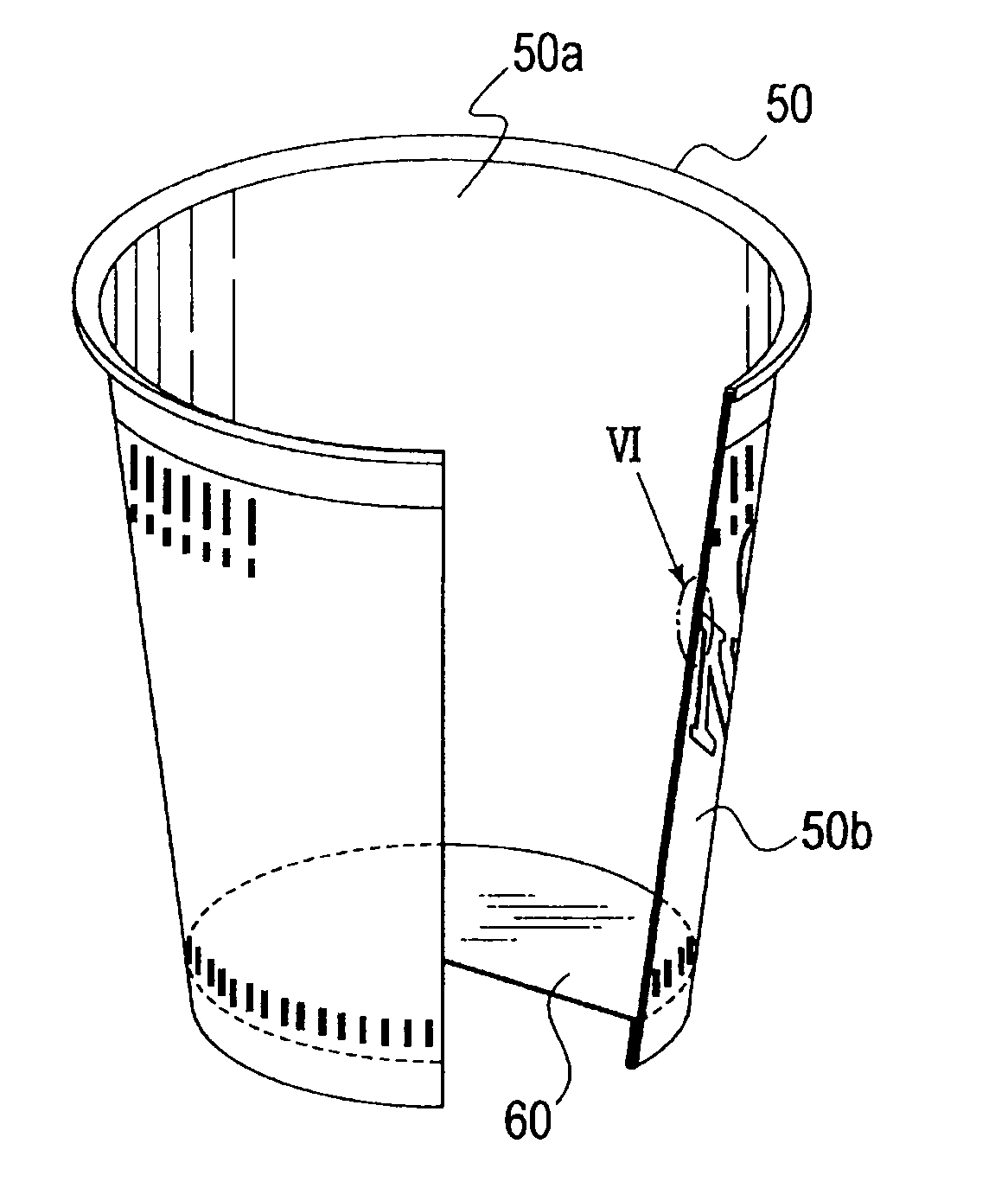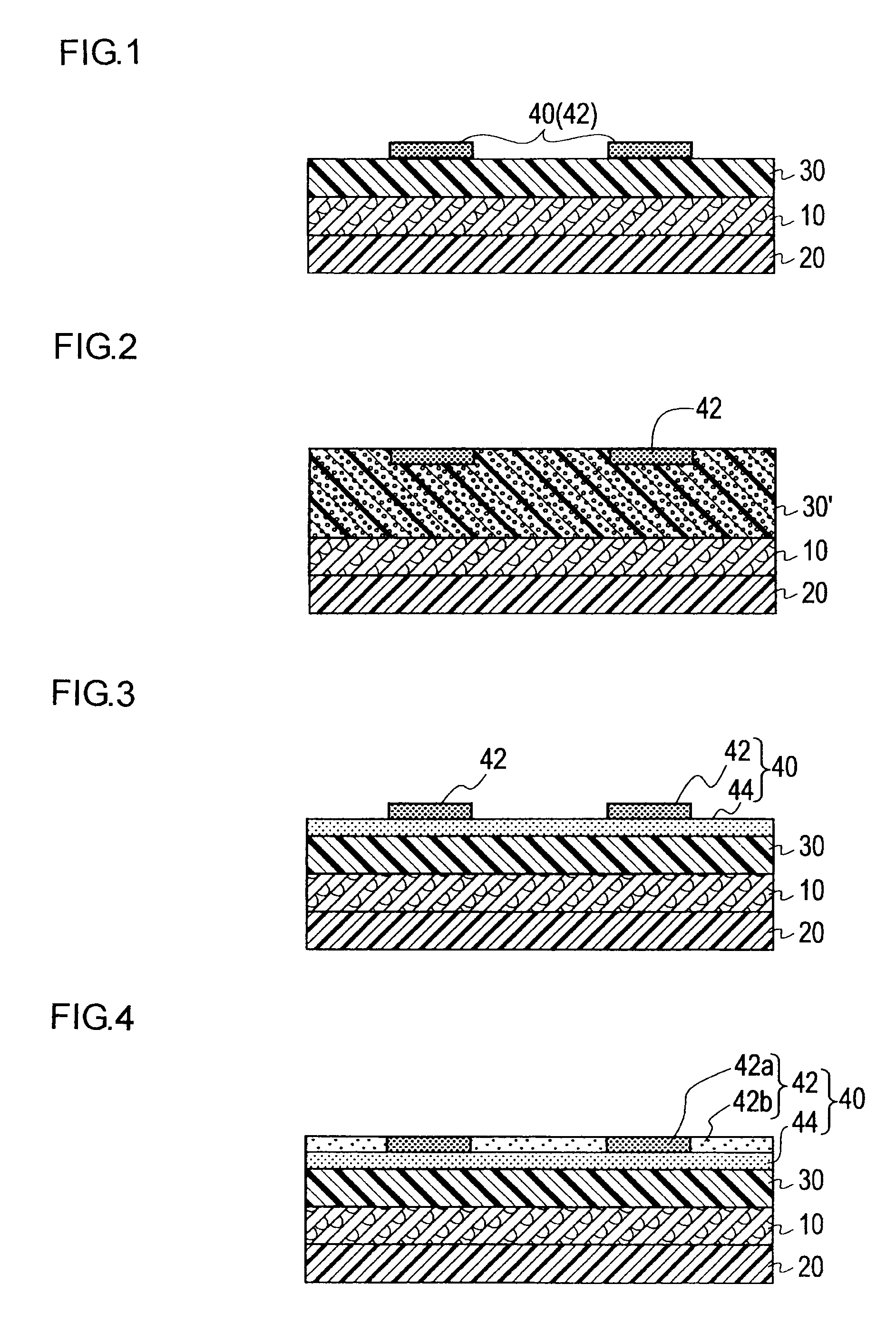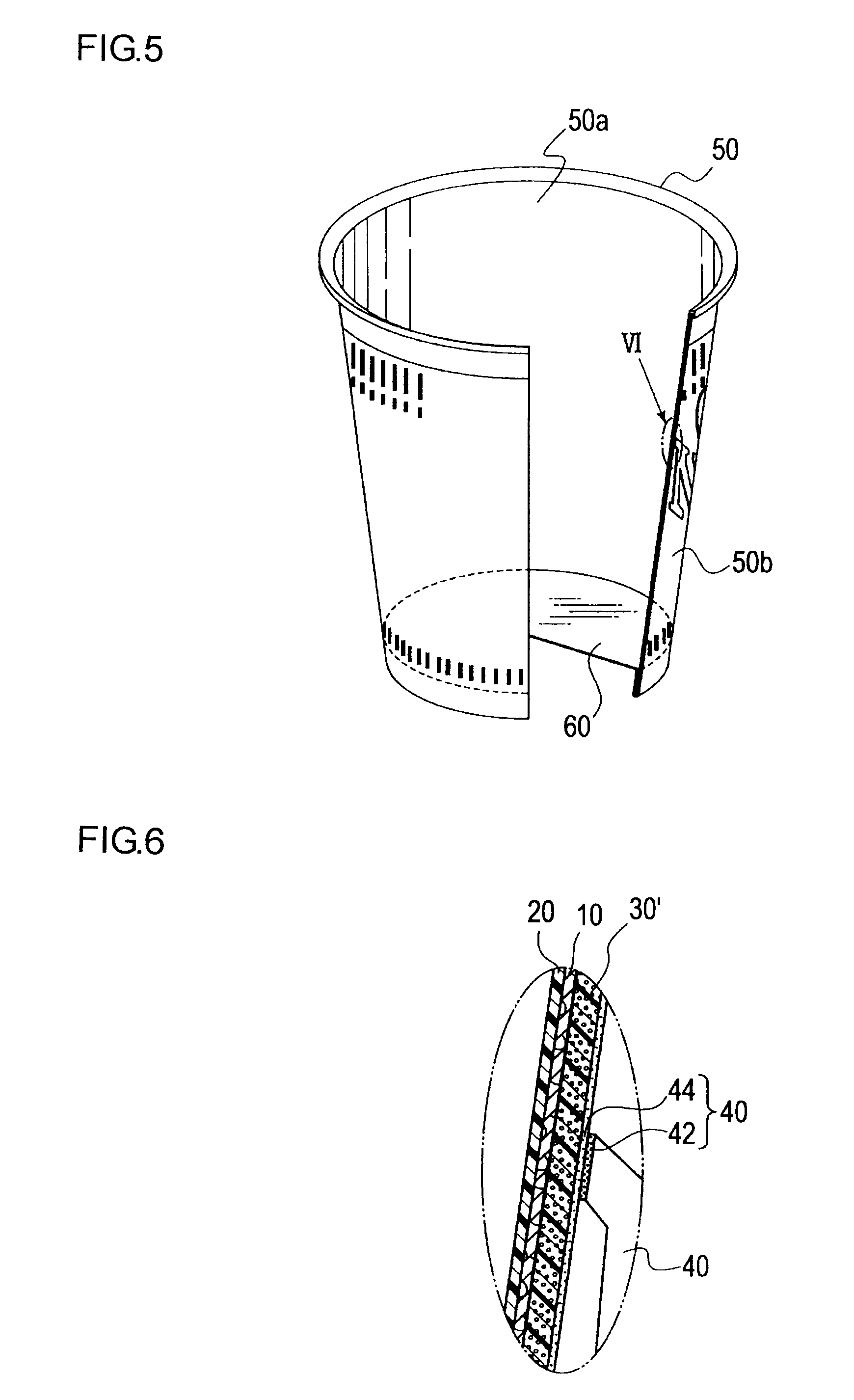Ink composition for printing, paper container material using the ink composition, and heat insulating foamed paper container
a technology of ink composition and paper container, which is applied in the direction of packaging goods, rigid containers, food heating containers, etc., can solve the problems of concavity and convexity at the surface, the thickness of the low-mp film after foaming is not uniform, and the concavity and convexity are likely to be formed at the surface, etc., to achieve excellent in various resistances required of ink and printing quality, excellent external appearance, and smooth surface
- Summary
- Abstract
- Description
- Claims
- Application Information
AI Technical Summary
Benefits of technology
Problems solved by technology
Method used
Image
Examples
preparation example 1
Preparation of Urethane Resin A
[0122]198.4 parts of a polytetramethylene glycol having a number average molecular weight of 2000, 10.3 parts of neopentyl glycol, 70.6 parts of isophorone diisocyanate, and 60.0 parts of ethyl acetate were fed into a four-necked flask equipped with a stirrer, a thermometer, a reflux cooler and a nitrogen gas inlet tube, and the mixture was allowed to react for 6 hours at 90° C. under a nitrogen gas stream. Thus, a prepolymer was obtained. Subsequently, this prepolymer was added dropwise into a mixture of 19.9 parts of isophorone diamine, 0.8 parts of dibutylamine, 430.0 parts of ethyl acetate, and 210.0 parts of isopropyl alcohol, and the chain length was extended. Thereby, a urethane resin A having a solids content of 30% and a weight average molecular weight of 66,000 was obtained.
preparation example 2
Preparation of Urethane Resin B
[0123]199.0 parts of a polytetramethylene glycol having a number average molecular weight of 2000, 17.6 parts of neopentyl glycol, 64.5 parts of isophorone diisocyanate, and 60.0 parts of ethyl acetate were fed into a four-necked flask equipped with a stirrer, a thermometer, a reflux cooler and a nitrogen gas inlet tube, and the mixture was allowed to react for 6 hours at 90° C. under a nitrogen gas stream. Thus, a prepolymer was obtained. Subsequently, this prepolymer was added dropwise into a mixture of 18.2 parts of isophorone diamine, 0.7 parts of dibutylamine, 430.0 parts of ethyl acetate, and 210.0 parts of isopropyl alcohol, and the chain length was extended. Thereby, a urethane resin B having a solids content of 30% and a weight average molecular weight of 74,000 was obtained.
preparation example 3
Preparation of Urethane Resin C
[0124]210.9 parts of a polytetramethylene glycol having a number average molecular weight of 2000, 7.9 parts of neopentyl glycol, 65.3 parts of isophorone diisocyanate, and 60.0 parts of ethyl acetate were fed into a four-necked flask equipped with a stirrer, a thermometer, a reflux cooler and a nitrogen gas inlet tube, and the mixture was allowed to react for 6 hours at 90° C. under a nitrogen gas stream. Thus, a prepolymer was obtained. Subsequently, this prepolymer was added dropwise into a mixture of 15.3 parts of isophorone diamine, 0.6 parts of dibutylamine, 430 parts of ethyl acetate, and 210 parts of isopropyl alcohol, and the chain length was extended. Thereby, a urethane resin C having a solids content of 30% and a weight average molecular weight of 81,000 was obtained.
PUM
| Property | Measurement | Unit |
|---|---|---|
| particle size | aaaaa | aaaaa |
| melting point | aaaaa | aaaaa |
| melting point | aaaaa | aaaaa |
Abstract
Description
Claims
Application Information
 Login to View More
Login to View More - R&D
- Intellectual Property
- Life Sciences
- Materials
- Tech Scout
- Unparalleled Data Quality
- Higher Quality Content
- 60% Fewer Hallucinations
Browse by: Latest US Patents, China's latest patents, Technical Efficacy Thesaurus, Application Domain, Technology Topic, Popular Technical Reports.
© 2025 PatSnap. All rights reserved.Legal|Privacy policy|Modern Slavery Act Transparency Statement|Sitemap|About US| Contact US: help@patsnap.com



